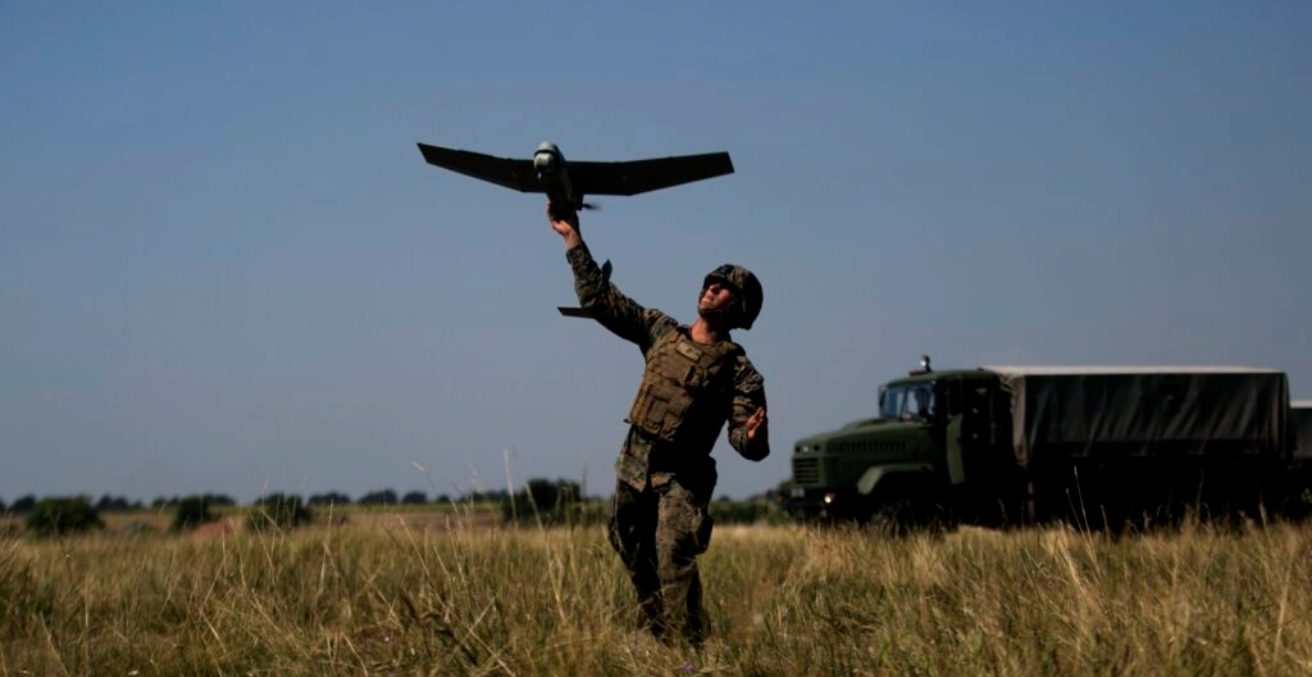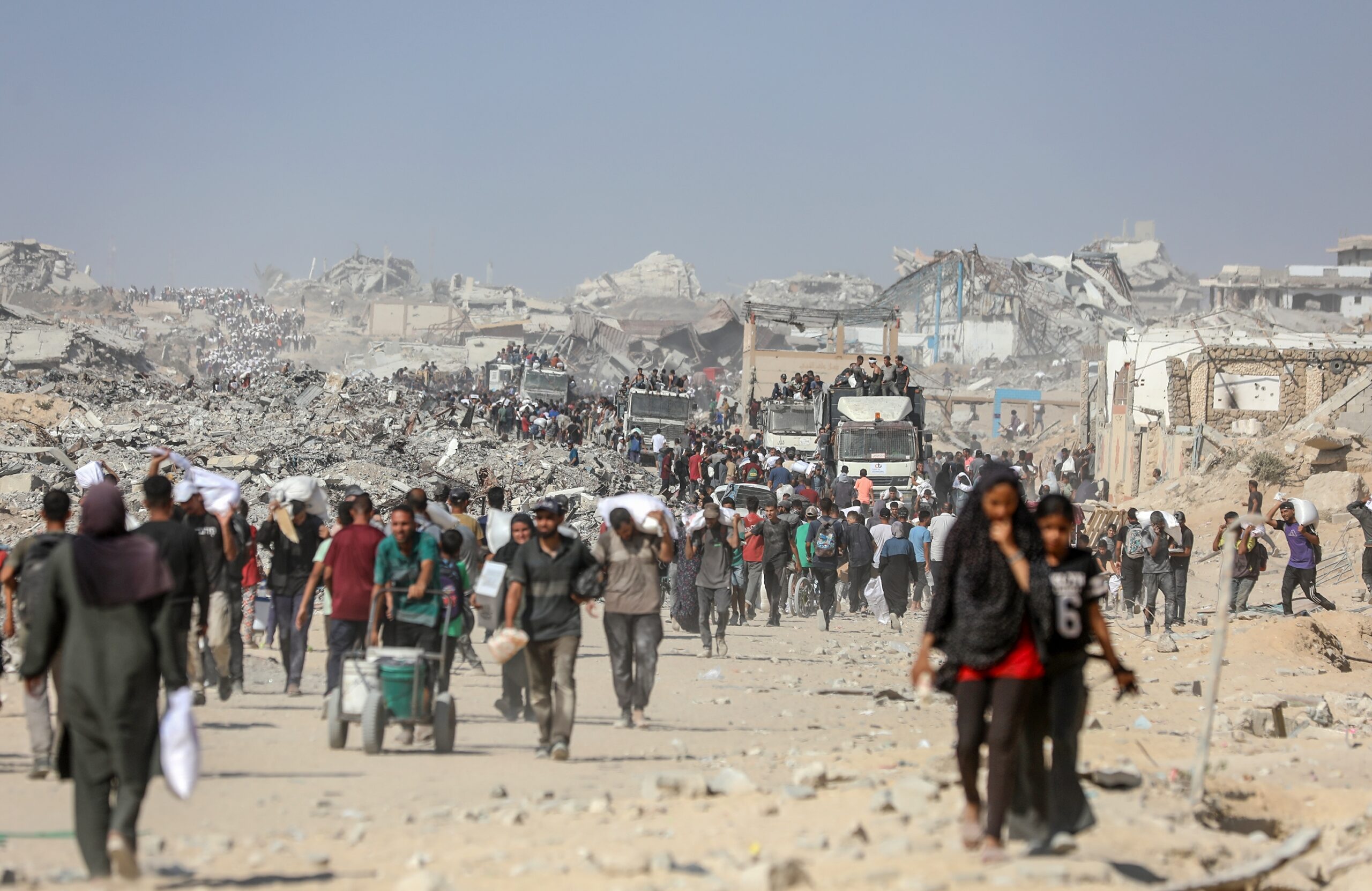The Russia-Ukraine war has ushered in a new era of warfare defined by low-cost, commercially available drones that challenge the dominance of traditional military hardware. As FPV drones and remote strike capabilities reshape combat strategy and battlefield ethics, the line between warfighting and video gaming grows increasingly blurred.
The Ukraine conflict has disrupted conventional military doctrine, evolving from Russia’s anticipated three-day operation into a protracted war that exemplifies the transformative impact of unmanned systems on modern warfare. Ukraine’s deployment of First Person View (FPV) drones has rendered traditional battlefield tactics increasingly obsolete, exposing the limitations of legacy heavy equipment in an era of pervasive battlefield transparency. This shift from expensive, conventional platforms to low-cost, commercially available drone technology represents a paradigm change in military operations. As these systems now dominate the contact lines, policymakers must recognise that future conflicts will be shaped not by industrial-scale military machinery, but by accessible, rapidly evolving drone capabilities that democratise battlefield lethality.
Drones are remotely piloted or autonomous pieces of equipment that can cause serious damage to an enemy, while keeping the pilot or operator relatively safe and away from the battlefield. Hi-Tech drones like MQ 9 Reaper drones were effectively used during the Global War on Terror. They were also a demonstration of dominance that only the richest can afford (one unit costs up to US$30 million, by comparison one can buy a fully equipped JF-17 4th generation fighter jet that is superior to any known combat class drone, for between 25-30 million.
In the second Karabakh war, Azerbaijan used attack and suicide drones. They claimed that these were responsible for the destruction of Armenian equipment on the ground which allowed the Azerbaijani infantry to advance relatively safely. There are disputes about how the drones eased the combat on the ground, however there is little dispute that they gave the edge to Azerbaijan. Azerbaijan possesses traditional attack aircraft like the SU 25. These were carefully used in the conflict instead of Bayraktar TB2 and Hermes 450 drones.
Drones like the Bayraktar TB2 have been used in Ukraine. They have been effective against Russian armoured vehicles, artillery, and other heavy ground equipment because of their superior surveillance from the sky. With time however, they became vulnerable to Russian air defence systems and improved electronic warfare capabilities. As a result, they have almost disappeared from the sky. Now they are mostly used for intelligence and surveillance in regions where they can be kept safe from Russian air defence. After all, these are quite expensive pieces of equipment, even if they are more affordable than their American cousins. For example, a Bayraktar TB-2 system may cost “only” up to $5 million.
Russia’s deployment of Iranian-designed Shahed drones (domestically produced as Gerans) since late 2022, demonstrates a critical evolution in asymmetric warfare strategy. At approximately $35,000 per unit, these one-way attack drones enable saturation attacks that systematically degrade Ukrainian air defences while creating corridors for higher-value missile strikes. This cost-effective approach inflicts substantial damage on civilian and military infrastructure despite high interception rates. However, unlike the tactical drone employment seen in the 2020 Nagorno-Karabakh conflict, these systems operate exclusively against rear-area targets using pre-programmed coordinates, lacking the dynamic targeting capability needed for direct combat support. Russia compensates for this tactical gap with glide bombs—imprecise but economical weapons that provide the destructive battlefield support its ground forces require. This bifurcated drone strategy highlights the emerging distinction between strategic attrition campaigns and tactical combat operations in contemporary warfare.
The convergence of commercial drone technology with military applications has created a new category of precision-guided munitions that fundamentally alters the cost-benefit calculus of modern warfare. FPV drones—originally designed for civilian recreational use—now constitute a critical combat capability in Ukraine, offering real-time targeting precision at a fraction of traditional weapons costs. These systems demonstrate unprecedented operational flexibility, engaging targets across the entire threat spectrum from individual combatants to strategic assets thousands of kilometers from the battlefield. This democratisation of precision strike capability represents a paradigm shift: commercially available technology costing hundreds of dollars can neutralise military assets worth millions, forcing a comprehensive reassessment of force protection doctrine and procurement priorities across all domains of warfare. The most successful unit in Ukraine is the Birds of Magyar—an entire platoon conducting efficient drone attacks on Russian forces. With all the advantages, however, FPV drones are not invincible.
It was once said that the war in Ukraine is “the war of one chance.” Every new weaponry, technology or workaround remains effective for a short time before the enemy adapts to it, counters and overcomes it. The window of opportunity to destroy or surveil the enemy closes fast. For example, the Russians were able to develop efficient electronic jamming systems to block the signals for the drones, so the operators would lose contact with their units. The Ukrainians caught up quickly and had to look for windows to sneak through, and while the upper hand in the development and innovation in drone warfare was mostly on the Ukrainian side, the Russians came up with the idea of FPV drones that are linked to the operator by an optic fibre cable.
Has warfare really been transformed?
No matter how quick, cheap, and efficient drones are built, they cannot be decisive in winning the war even though they have contributed to the winning of battles. On the battlefield, their advantage is granted by high level real time surveillance from higher rank drones, satellites, and critically high speed and quality internet connection.
Experts argue that because of innovations in connectivity technologies, the Clausewitzian fog of war that is pervasive on the frontlines has been overcome or greatly reduced. Under these circumstances, a cheap DIY FPV drone bares higher value than an expensive high tech tank or armoured vehicle, or an attack aircraft. While artillery is still the god of war, it is also vulnerable to a precise hit by an optic fibre lead drone which can fly through the window of the hangar where it is hidden. With a range of up to 20 km, it turns the frontline to a frozen open kill zone, where both personnel and machinery are easy targets for the assets that—unlike the hi-tech combat/attack drones—are cheap enough to lose. Most importantly and sadly ironically, the killing is done from the “comfort of one’s own bunker” and barely can be distinguished from a modern, well-designed video game.
But there are some concerns too. Ukraine conducted a bold move on 1 June, 2025. Reportedly, 117 drones took off from specially mounted containers deep in Russian territory and attacked the strategic nuclear fleet of the Russian air force, causing not only severe financial and technical losses, but also a colossal reputational blow. Operation Spiderweb was considered a major victory for Ukraine, but caused some headache in Washington, as there is no guarantee that other parties cannot or would not replicate the maneuver. These small, low-cost drones can be transported covertly in shipping containers, making inspection nearly impossible.
US experts fear China could adopt similar tactics within US territory, especially via COSCO vessels docking near key military sites like Camp Pendleton. This challenges traditional deterrence models reliant on expensive, centralised systems such as air superiority or missile defence. If hobby-grade drones can neutralise billion-dollar assets, the foundation of dominance-based deterrence crumbles, prompting calls to rethink military security in an age of decentralised, asymmetric, drone warfare.
Digital connectivity and ubiquitous surveillance have effectively dissolved Clausewitz’s “fog of war,” transforming battlefields into transparent killing fields dominated by FPV drone swarms. This technological shift portends a fundamental restructuring of combat operations, where operators engage targets from hardened command centres using gaming-style interfaces—actualising Tool’s prescient 2006 lyric: “I need to watch things die from a good safe distance.” The implications for military doctrine are profound: as remote warfare capabilities mature, traditional concepts of battlefield presence, risk, and warrior ethos face obsolescence. Policymakers must grapple with the strategic, ethical, and psychological ramifications of warfare conducted through screens, where lethality is divorced from physical proximity and combatants become distant operators in an increasingly gamified theatre of war.
Dr Sándor Seremet received his MA degree in History at the Uzhorod National University (UA). He defended his PhD thesis in 2016 at the Pázmány Péter Catholic University about the procedure of border creation of today’s Transcarpathia after the end of WWI. From 2020, he is an Associate Research Fellow of the Institute for Foreign Affairs and Trade. From November 2022, he is an expert at the Eurasian Centre of János Neumann University. From March 2023, he is a Senior Research Fellow at the Hungarian Institute of International Affairs.
This article is published under a Creative Commons License and may be republished with attribution.





